Beautiful, clever ravens are mysterious birds and a popular subject of mythology. In the West, ravens’ association with ill omens is widespread. For example, in Germany, they’re considered damned souls, and in Sweden, the ghosts of murdered folks. In England, ravens famously reside at the Tower of London under the care of the Ravenmaster because, in the 1600s, an astronomer predicted the tower and the whole Kingdom would fall if they left! Raven mythology abounds, but there’s nothing mysterious about their nesting habits. Discover where black-cloaked ravens nest, what they use to build nests, and how ravens protect their home from invaders.

A Ravenmaster cares for the Tower of London’s resident ravens.
©VDB Photos/Shutterstock.com
What Is a Raven?
Is a raven just a large crow?
No.
Both crows and ravens are large black birds in the Corvus genus, but they’re different species. The best way to tell them apart is their call. Crows “caw-caw-caw,” whereas ravens croak out “kraaa”.
Entirely black ravens reach 27 inches long as opposed to a common crow’s 20 inches, and they appear slimmer. They have massive, shaggy necks, long diamond-shaped tails, and narrow wings with thin-fingered wingtips. And let’s not forget that epic face blade. A raven’s beak is like a hunting knife. Fully grown adult beaks reach a whopping 3.5 inches in length!
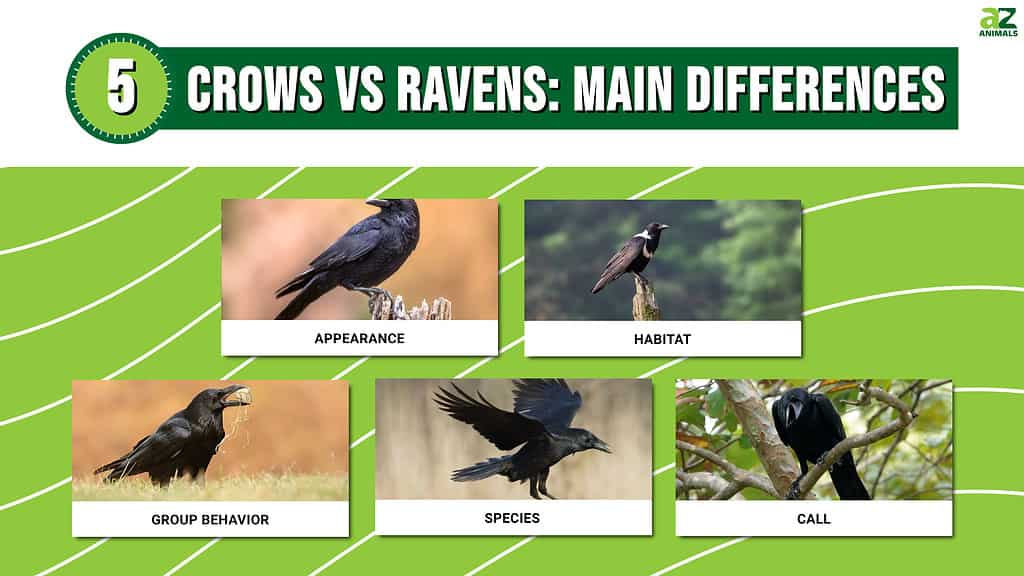
Where Do Ravens Nest?
Common ravens nest in large trees chiefly in the “V” section of two vertical branches, on cliffs ledges beneath an overhang, or on urban power line towers, telephone poles, and bridge supports. Resourceful ravens are intelligent and make use of many structures to securely build a nest.
Before breeding commences, ravens, who mate for life, must secure a territory. Ravens do not live in groups but pair up and aggressively defend their patch from other birds. How large a territory is depends on the resources. Lots of resources mean closer nests as competition is not so fierce.
When it comes to nest-building territory, ravens chose forests, mountains, deserts, grasslands, tundra, agricultural fields, farms, and even towns. Ravens can survive in towns, feeding on human trash cans and drinking from ponds or irrigation systems.
In warm areas, ravens may pick a dense foliage tree that provides shade, but they might choose a more enclosed, insulated space in cooler areas. Deciduous sturdy beeches, maples, and oaks are popular, as are evergreen spruce or pines that insulate and protect against opportunistic predators.
Utilizing man-made resources is one of a raven’s skills. Top urban nesting sites include lofty telegraph poles, billboard struts, and streetlights.
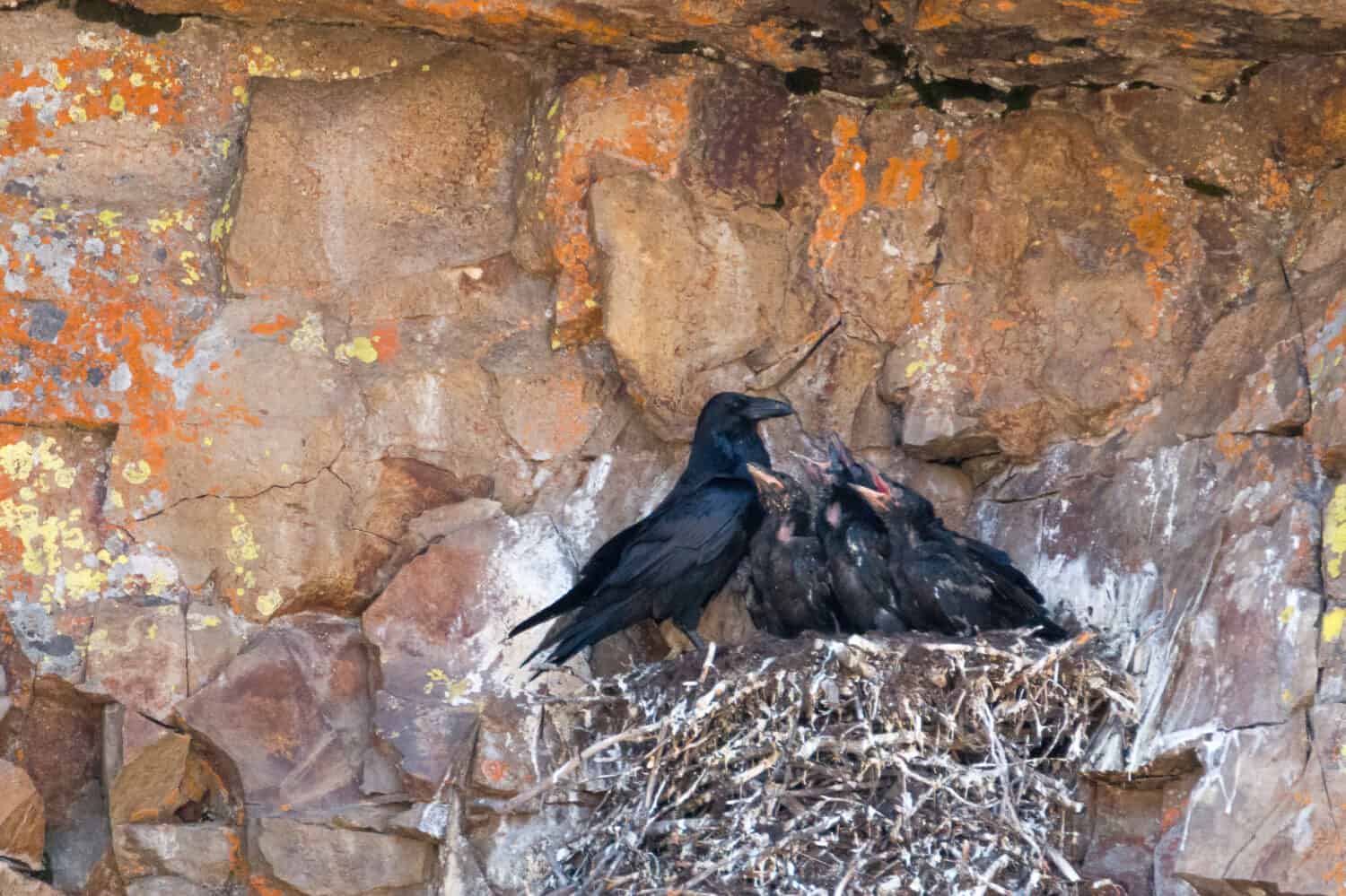
Ravens nest on cliff ledges, tree forks, telegraph poles, and billboards.
©J.Copenheaver Photography/Shutterstock.com
Keeping the Nest Safe
Grown ravens have few natural predators, but eggs and baby birds offer nutritious food for many predators, so ravens need to defend their nests from raiders.
Their incredible beak is strong enough to inflict serious wounds, but it’s not enough for stealthy thieves like martens, who sneak, snatch, and grab. Ravens choose high, hidden nesting sites to prevent raids.
Raven nest predators include:

Martens steal raven eggs from their lofty nests.
©slowmotiongli/Shutterstock.com
Raven Nesting Materials
A raven’s nest is a deep bowl-shaped structure, although, from the outside, it appears a mess of untidy sticks, it’s actually an incredible feat of engineering.
Ravens gather sticks, bones, wire, mud, wool, moss, and twigs. Males tend to gather the equipment, and the females build it. The base is constructed from three-foot-long sticks, bones, and wire, which she wedges into a tree crevice or lies on a platform and weaves into a bowl. Then, inside the bowl, she constructs a cup from the twigs, mud, wool, and mosses.
Overall, a raven’s nest is approximately five feet wide and two feet high, but the internal structure that cups her egg clutch is only 12 inches wide and six inches high. She’ll lay 3-7 two-inch-long mottled blue or green eggs in that space and incubate them for around 25 days. Baby ravens fledge after four to seven weeks, by which time they‘re almost fully grown. No wonder raven parents need a five-foot-wide nest!
The whole nest-building process takes around nine to 21 days, and it’s such an operation that ravens like to use the same nest each year or take over an abandoned abode. Ravens repair nests if they break and keep the area clear of feces and rotting matter like uneaten carrion.

Raven nests can reach five feet wide with an internal eggcup to keep eggs and fledglings secure.
©Vishnevskiy Vasily/Shutterstock.com
When Do Ravens Nest?
Ravens begin to nest in late winter to early spring, depending on the weather and available resources. In general, ravens tend to nest in the month of February.
What Ravens Live in the U.S.?
Ravens live in most of the Northern Hemisphere. In the United States, they’re widespread in many different habitats, from the hot deserts to the chilly arctic tundra. However, ravens aren’t found in great abundance in the decimated eastern forests and Great Plains.
According to the North America Breeding Bird Survey, their population is increasing in the east with the re-establishment of the great eastern forests. Ravens thrive near human habitation, so their ranges in towns and desert environments have increased.
Which U.S. States Have the Most Ravens?
Chiefly, ravens inhabit Alaska to Minnesota, across the Great Lakes, and into the north of New England. Ravens also reside in the Appalachians to Georgia.
In central and eastern North America ravens adapting to urban locations have expanded their territories. Coastal areas like California and the Chesapeake region have seen a recent increase in raven numbers, too. Increasing numbers are due to their environmental tolerance, omnivorous diet, and opportunistic behaviors. Clever ravens can make use of different environments and take advantage of human landscape influences.
Whilst this is good news for corvid lovers, environmentalists worry that hyperpredation by ravens on endangered species is an extinction threat. For example, ravens have moved into the Mojave Desert because human habitation provides resources. This means they prey on endangered juvenile Mojave tortoises.
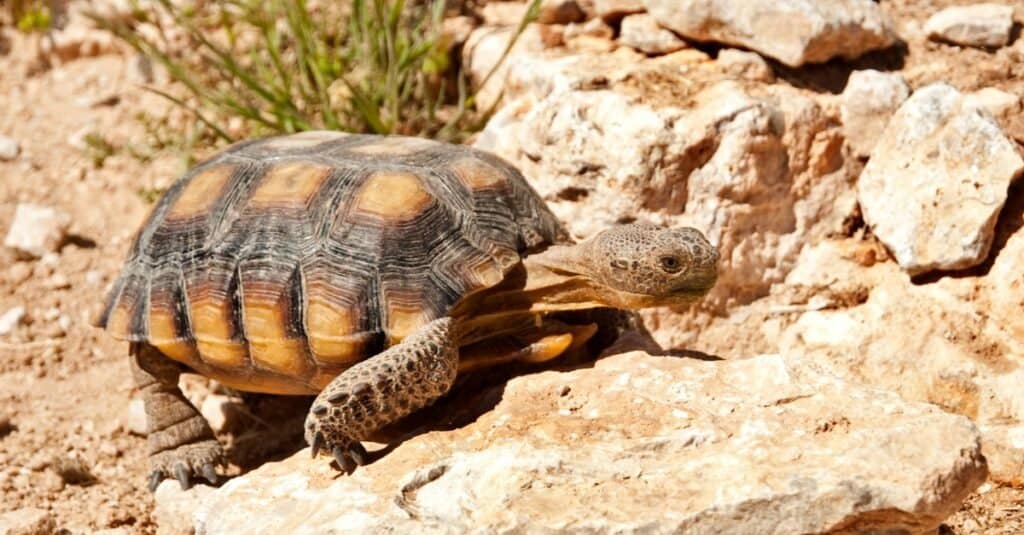
Ravens prey on Mojave Desert tortoises.
©Darren J. Bradley/Shutterstock.com
What Do Ravens Eat?
Ravens eat pretty much anything they can swallow. Omnivorous ravens eat berries, nuts, greenery, human trash, carrion, and they prey on:
- Rodents
- Fledgling birds
- Eggs
- Lizards
- Insects
- Worms
- Amphibians
There’s very little a raven won’t eat or try to eat, be it dead or alive. Ravens sometimes pose a threat to farm animals, such as newborn lambs by pecking their faces. Their stupendous beaks easily rip open skin or trash packets, but ravens also use them delicately to pinch up small objects like seeds. Ravens cache their food, hiding it from other animals, ready to retrieve it at a later date.
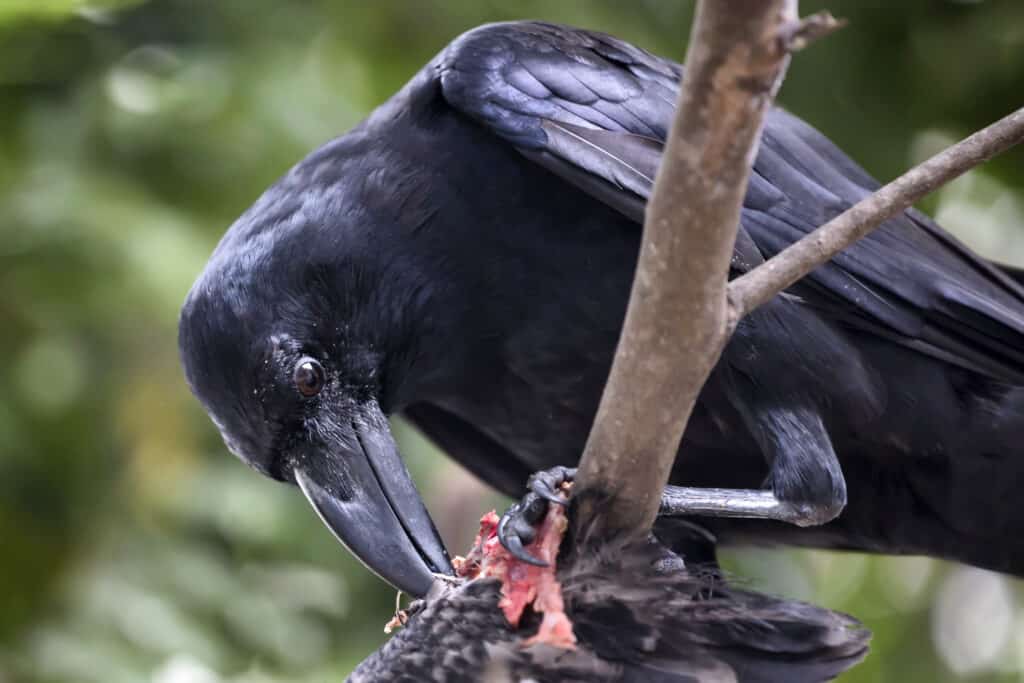
A raven’s beak can reach 3.5 inches long.
©Raven eating carrion/Shutterstock.com
Ravens use their large brains to hunt and scavenge. They wait for an opportune moment, often sitting in trees or other concealed spots for hours to grab their food when it’s safe. Experts have even recorded usually solitary ravens working in groups to raid seabird colonies. Some ravens distracted the birds, while others raided the fledglings and eggs. Then, they swapped, so everyone got to eat.
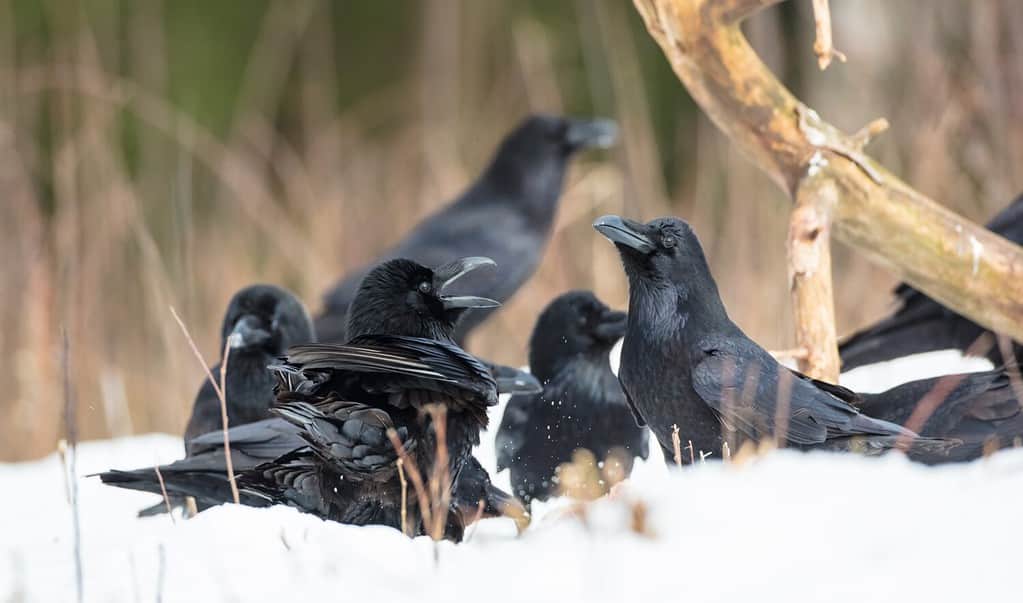
Usually, solitary ravens work in pairs or groups to raid seabird colonies.
©Simonas Minkevicius/Shutterstock.com
Are Ravens Clever?
Quoth the raven: “Yes, ravens are intelligent corvids.” If their incredible nest-building skills didn’t convince you, then read on.
Research indicates ravens have similar learning capacities to primates and dolphins. They utilize tools, recognize faces and future plans, show empathy, and problem-solve. What’s more, they play. Young ravens like to choose a stick or other object to toy with, dropping, chasing, and throwing it around. Snowboarding ravens are a thing, too! Yes, reports show ravens using plastic lids to slide down snowy slopes for no recognizable reason other than pure joy.
Recap: Where Do Ravens Nest?
Mysterious, ebony-cloaked raven pairs nest on cliff ledges, in the “V” of large tree branches, and on top of human constructions such as billboards, telegraph poles, and bridge supports. They prefer coastal areas, forests, farmland, and human habitations that provide plenty of shelter from predators and the elements, plus resources to raise chicks.
The photo featured at the top of this post is © Michal Pesata/Shutterstock.com
Thank you for reading! Have some feedback for us? Contact the AZ Animals editorial team.






